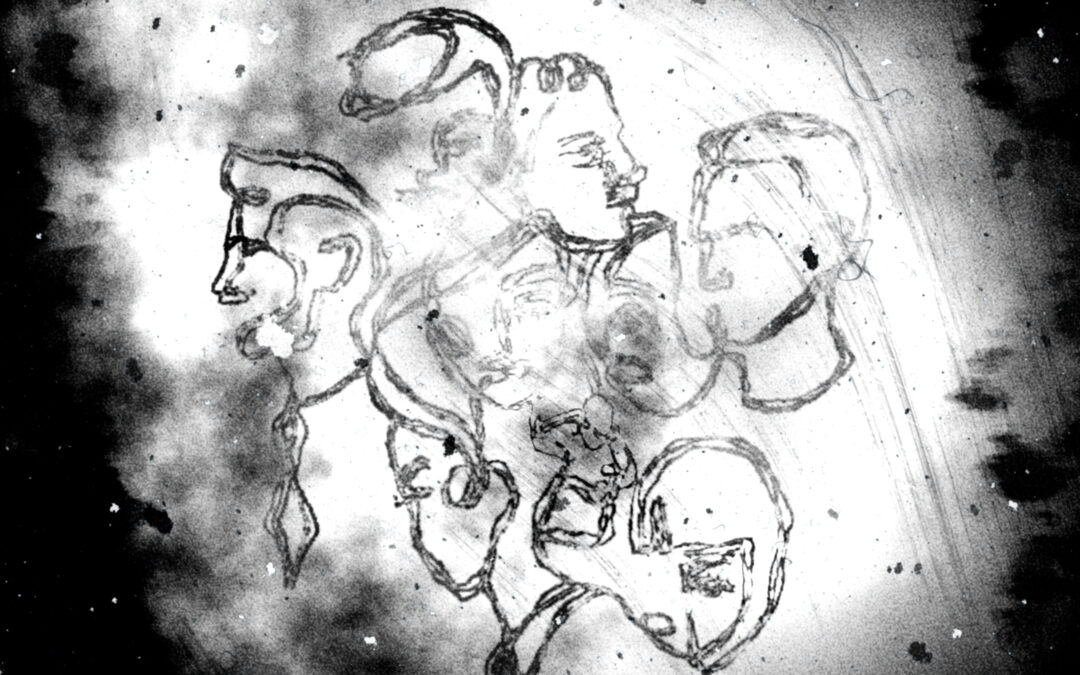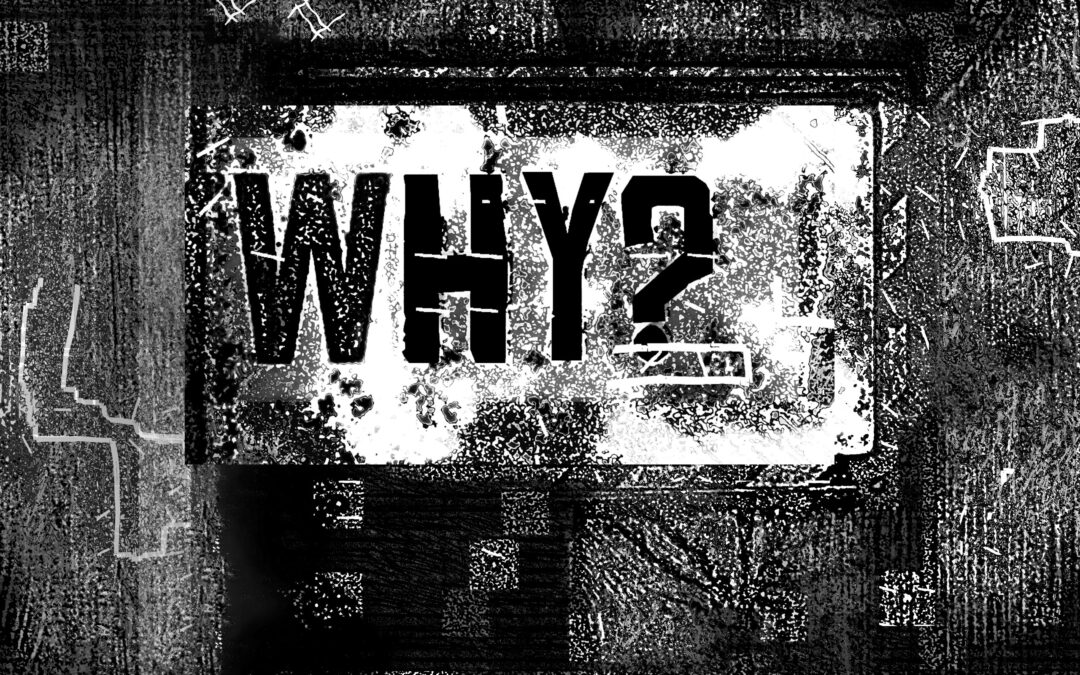A conversation on ‘welfare bordering’: From Mexico to the UK
In this blog, Valentina Glockner, one of the Shadows project advisors, and Rachel Rosen, Shadows co-lead, discuss the concept of ‘welfare bordering’ across contexts.
Rachel: Thanks so much for speaking with me today. Although our research is separated by over 8000 kilometres, when we were thinking about advisors for Shadows, we were excited to have you on board as an advisor both because of your background in childhood, family mobility and punitive border regimes, but also because we see value in de-centring the ‘national’ or, to put it more robustly, countering methodological nationalism. To my mind, one of the exciting ways to achieve this is to work with Cindi Katz’s idea of ‘counter topography’, examining the way global processes fall, so to speak, in diverse contexts to better understand the (potential) connections between places which have been artificially separated by borders as well as their local specificity. As she argues, ‘Not all places affected by capital’s global ambition are affected the same way, and not all issues matter equally everywhere’ (Katz, 2001: 1229), highlighting that we can learn a lot analytically and politically by reflecting on these connections and distinctions. So today I thought we might engage in a counter topographical exercise, specifically by thinking together about ‘welfare bordering’, an idea we are developing in our Shadows research. I’ll come on to this, but to start off, it would be helpful if you could introduce yourself and say something about your research, teaching, and / or activism.
Valentina: Thank you so much for having me. I’m excited to learn with you on your project and I already feel inspired! I’m an anthropologist from Mexico, and I’ve been working with children and youth on the move. I’ve been trying to build bridges between anthropology and implicated action research but also ethnography as a tool of self-representation. I’m really interested in art methodologies for critical knowledge building along with children and youth on the move. I’ve been trying to build research as a form of acompañamiento [accompaniment in Spanish] with Indigenous children, Central American children transiting through Mexico or immobilized in Mexico, and also Mexican children who are survivors of forced displacement.
Rachel: That’s such a powerful and compelling way to talk about research: as acompañamiento. I like that idea of walking alongside and the potential, active solidarity that research can strive to offer. But also, you highlight an important point that as researchers we are implicated in the experiences that we write about.
Valentina: Absolutely, we have a political responsibility while doing research for and with children and young people on the move. It’s about bringing to the forefront issues of power, inequalities, and privileges. There is no neutral field or context, no neutral way to research. Also, there are things that research cannot do. It has very strong limitations. You should be aware of those limitations and know that many of those can and should be addressed through acompañamiento.
Rachel: Taking a step back from methodology now, today I was hoping we could think together counter topographically about ‘welfare bordering’. In the Shadows project, we use this to point to the ways that migration regimes (so policies, institutional structures, material and symbolic processes of bordering, and so forth) deny or set limits on social support for people on the move. I suppose that the concept of welfare bordering implies that there is some sort of redistribution or pan-individual support scheme, typically associated with Keynesian state welfarism, available in the first place. The UK does have a semblance of a state welfare system (e.g., with health care, council housing, financial support e.g., universal credit ostensibly free at the point of provision), despite its neoliberal orientation with increasing privatisation, retrenchment, and targeted provision. Can you say a bit about Mexico in relation to welfare provision?
Valentina: Actually, yes, I find the concept of ‘welfare bordering’, and what you’re trying to make visible through it, truly engaging. On the one side we could say that it is a situated concept that at the same time allows us to think beyond the realm of the local and the national. On this point, I must say that in Mexico, and in most of Latin America for that matter, we never had a welfare state. At most we had something similar at certain moments, but much more precarious and limited. It just never came to become a welfare state. What we have is just patches of specific programs, environments, and factors that might bring protection and perhaps wellbeing, but we are very far away from welfare. We have constrained environments with instances of care and protection. What we have here – especially when talking about migrant children – are spaces, programs and dynamics of protection that are always limited, precarious, contingent, and temporary. The most important thing to know is that these instances and spaces of protection and limited wellbeing coexist and overlap with spaces and dynamics of non-protection and violence. This fluctuation means children can be “protected” while they’re also being exposed to new dimensions of violence through such “protection”. If you’re a child on the move, it is a constant movement between inclusion and exclusion; to having your life valued and then have your life deemed disposable; being visible and being rendered invisible; and between wellbeing, protection, and life or death.
To give you an example: a 16-year-old Central American young person flees his family, his community and his country because none of the three can offer him a safe and secure environment. By fleeing and crossing the border into Mexico he manages to make himself safe from these violences, but at the same time he is exposed to new ones in Tapachula, a city that has been named la ciudad cárcel, the “prison city”, for its inhumane treatment and the immobilization policies being implemented against people on the move. Although his story is much more complex than what I can relate here, at some point, after living and working on the street, an NGO puts him in contact with the state’s “protection” services, so he no longer must live on the street and no longer has to work to survive. But this means he also cannot send remittances to his family, which is a source of great distress for him. So, this “protection” becomes economic violence, and also the denial of his autonomy and his agency, and the role that both play in his life-course and the life of his family; and eventually this becomes a form of violence too. In addition to this, state “protection” exposes him to deportation – the most paradigmatic form of the protection-violence continuum being exerted against children on the move – because the only thing that the protection authorities see is that he is an “unaccompanied child” who must be returned to his family. So “protection” generates new dimensions of violence for him, from which he also has to seek safety. And, unfortunately, the story goes on and on like this. Almost every encounter with institutional forms of “protection” and “wellbeing” are this ambivalent and contradictory. So, I guess if we are going to talk about welfare, we have to talk about how to build a system that does not reproduce this dynamic of protection that throws you right into new dynamics of violence.
Rachel: I’m struck by the horrific violence that’s perpetrated even in the name of so-called “protection”. We might think about it in the way that Mezzadra and Neilson (2013) talk about the ways that borders do not just exclude, but they also include, filter, and sort. And one of the things I hear you talking about is that sorting and filtering child migrants in the name of protection can be carceral and violent, including in a way that’s profoundly destabilizing to these young people sense of themselves.
But going back to young people’s sense of themselves. All this protection that brings new violence(s) can become a destabilizing dynamic because if “protection” means adopting certain “legitimate” ways of being and inhabiting the world which contradict everything you have previously been and learned in your life, then your sense of self is not only destabilized, but stigmatized, disrupted, and broken. Let me go back to the example of the 16-year-old Central American teen. After he finally manages to avoid deportation – perhaps “escape” would be more accurate, he is sent to a programme funded by an international organization, so that he can apply for asylum in Mexico. He automatically enters into a dynamic of protection that requires him to conform to certain rules and comply with the “requirements” that define, so to speak, the “good migrant” or the “good asylum seeker”. He has to stop working on the streets and in the informal market, even if formal employment generates half the income he’s been earning and means that he will be exploited by an employer who will profit even more than him from his own work.
Something similar happens with formal education. Therefore, the crucial question here is not only what material provisions welfare should provide, but what senses of self it requires us to adopt in order to have access to them and what are the consequences of not doing so.
Rachel: This is a really important point about the way bordering shapes the possibilities of the subject: about what it is that matters, what it is that that makes somebody feel that they are a good person, or able to live a good life. I mean, if these are denied, that’s akin to a direct assault on the self. So, welfare borders, or borders more generally, operate at that psychic level as well as a material level, whether a wall, a barricade, or barbed wire.
Valentina: It’s difficult to provide the materials to create the spaces needed to defy the legal illegality regime. But, food, education, employment and so on are not as difficult as creating strong, meaningful bonds. It’s really hard to get over the fact of being so far away from loved ones and of having to deal with so much pain and violence from the past. So that’s another very important meaning of welfare. We are always talking about the material dimension and budgeting of social programs. But what about the other meanings of welfare: feeling you belong and that you are safe, loved, cherished, and welcome. That’s the real deal.
Rachel: One of the things I hear you saying then is that there’s never actually protection or never welfare when you have groups of people that are racialised and constituted as disposable, or, in Ruth Wilson Gilmore’s (2007: 28) words ‘The state-sanctioned and/or extralegal production and exploitation of group-differentiated vulnerability to premature death’. Even the ‘welfare state’ is a myth then.
Valentina: The question, it seems to me, is that welfare without a rethinking and a re-conceptualization of care in the context of contemporary forms of violence and dispossession, and without the re-politicization of life and of what gives it meaning, remains rather hollow. It can be something that is given or denied. But even when it is given, it may not really be challenging the disposability of life created and sustained, for example, by nation states or borders. Instead, what we are creating is limited spaces, services, or dynamics of protection, not welfare. These are full of flaws and grey zones, constantly fluctuating and overlapping with spaces of non-protection. What is protection for one small girl might not be protection, or might not even exist, for a teenage girl.
Rachel: Taking a sort of sideway step here, one of the things that happens in a lot of the discussions around state welfare, aside from what you’ve already problematized, is that it tends to be thought about as a national project. The British welfare state has been, from the outset, constructed and reified as a national project. For example, the ‘no recourse to public funds’ condition placed on undocumented people and those with time limited leave to remain is based on the logic that the ‘public’ is constituted only by a portion of those present on British shores. But if we think more historically, the British welfare state was funded through colonial extraction. As Gurminder Bhambra (2022) puts it: extraction was imperial, redistribution was national. Precisely those people who are now told they are not part of the public and do not have entitlement to support like others present in Britain come from those post-colonial countries which funded the development of the welfare state. As Eve Dickson and I (2021) have argued previously: these are people who the British state may struggle to deport, but who are none-the-less made to ‘pay’ for their purported ‘undesirability’ and lack of entitlement through a draconian policy that denies them the means of life. We see a lot of denial of the colonial and neo-colonial grounding of the welfare state in Britain. So, I’d be really interested in your thoughts on that, going back to what you said about the lack of a welfare system in Mexico, but also your points about the ways in which deservingness, desirability, entitlement, and belonging are bordered by imaginaries of the nation state.
Valentina: I mean Mexico was the colony, right? It was never the Empire, and in present times we have neo-colonialism and internal neo-colonialism, especially towards Indigenous and Afro-descendant people. What we have here is a nation state that produces limited and contingent welfare programs and public policy that function primarily for its self-legitimization, and secondarily, to try to temper the worst effects of violence, precarisation and dispossession. This is also a state that tries to legitimize itself in the shadow of an empire – the United States – and does so in part by serving as its border territory to stop the flows of people migrating, fleeing, and arriving in search of asylum. We live under a neo-colonial, neo-imperial order in which we are a second- or third-class country, serving as a buffer zone and proxy army to fight a war against people on the move.
In this context, the nation state needs to produce certain discourses and mechanisms to help it self-legitimize and give the appearance of sovereignty, such as welfare programs (aimed only at its own population), the myth of the protection of migrants, and an official discourse on human rights. At the same time, it militarizes its territory and wages a war against people on the move. Their presence in this “border country” is a constant reminder that we live under an imperial order and that sovereignty is more a fiction than a reality. We must serve a greater master, and protection and welfare are really only for the few, those who manage to fit and serve the project of the nation state and its goal of self-legitimization and durability.
Rachel: I think this is a really important point, Valentina, that not only is welfare not actually just a national project, but there are these different layers to this imperial project, with post-colonial spaces playing the role of outsourced detention centres and outsourced borders around welfare provision. Going back to where we started with reflecting counter topographically on ‘welfare bordering’, what sort of analytic and political purchase does this concept have for thinking about what we are seeing in diverse contexts in relation to people on the move?
Valentina: Well, yes, I think this is a really important point. Not only have post-colonial countries turned into buffer zones and “border countries”, but they have turned immobility into a governance tool to serve their own ends as well as to serve larger powers. In addition to this, these territories have become zones where the most abject violence (forced disappearance and displacement, trafficking and smuggling, the worst effects of the war on drugs, etc.) converge with state and transnational mechanisms that are defining the new forms of bio and necropolitical governance[1], as well as the shifting borders of the humanitarian: global “safe and orderly migration”, the agreements between the USA and Mexico that have turned the latter into a virtual “safe third country”, or the forced return of people to Mexico under policies such as Title 42 and the Migrant Protection Protocols, are some examples. Here, welfare not only does not exist, but what remains is violence (private and from the state) and militarization that converge with spaces, institutions, and tools that only offer precarious, targeted and contingent protection. If we talk specifically about people on the move, then the concept of ‘welfare bordering’ makes a lot of sense. We need to think about how the governmentality of welfare or, in our case, of protection/non-protection works in practice and the effects it has on individuals, families and communities on the move.
[1] A recent example would be what happened on 27 March 2023 in Ciudad Juarez, Chihuahua, on the U.S.-Mexico border, when 40 migrant men, all from South and Central America, were burned to death. Their death was the result of the action of immigration officials, who received explicit orders from one of their superiors to “not let them leave”, when they started a fire as a sign of protest for the unjust detentions (some of them even had a temporary stay permit) and the inhumane conditions of their detention.
References
Bhambra GK (2022) Relations of extraction, relations of redistribution: Empire, nation, and the construction of the British welfare state. Br J Sociol 73(1): 4-15.
Dickson E and Rosen R (2021) “Punishing those who do the wrong thing”: Enforcing destitution and debt through the UK’s family migration rules. Critical Social Policy 41(4): 545–565.
Gilmore RW (2007) Golden Gulag: Prisons, surplus, crisis, and opposition in globalizing California. Berkeley and Los Angeles, California: University of California Press.
Katz C (2001) On the grounds of globalization: A topography for feminist political engagement. Signs: Journal of Women in Culture and Society 26(4): 1213-1234.
Mezzadra S and Neilson B (2013) Borders as Method, or, The Multiplication of Labor. Durham and London: Duke University Press.








